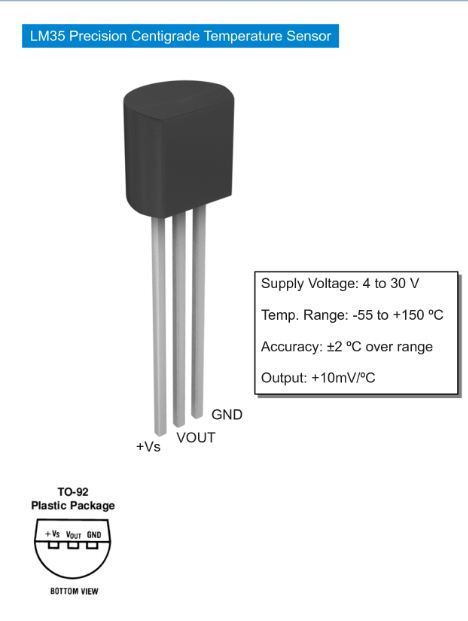In this new tutorial, we will be interfacing a LM35 based temperature sensor with ATMEGA32. The 3 main types are thermometers, resistance temperature detectors, and thermocouples. All three of these sensors measure a physical property (i.e. volume of a liquid, current through a wire), which changes as a function of temperature. In addition to the 3 main types of temperature sensors, there are numerous other temperature sensors available for use.
However the LM35 based sensors are precision-integrated temperature sensors, with an output voltage linearly proportional to the Centigrade temperature. The main advantage is these types of sensors don’t require any external calibration. They are internally calibrated and simply generate the output with respect to the temperature they detect. The device is used with single power supplies, or with plus and minus supplies. As the LM35 draws only 60 μA from the supply, it has very low self-heating of less than 0.1°C in still air. The LM35 is rated to operate over a −55°C to +150°C temperature range, while the LM35C is rated for a −40°C to +110°C range (−10° with improved accuracy).LM35 series of temperature sensor was initially manufactured by the National Instrument but in the current scenario, almost every semiconductor company manufacture LM35 based temperature sensor.
Before starting with the coding part, make sure you have a fair knowledge about using ADC of AVR. Since we will be displaying the temperature on a character LCD, make sure you have gone through the LCD tutorial posted on the website.
For more detail: Interfacing LM35 to ATMEGA32

